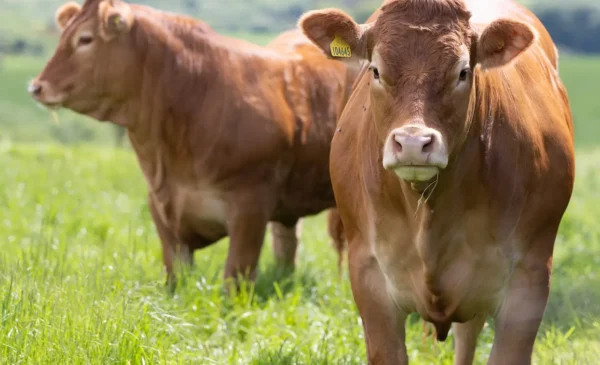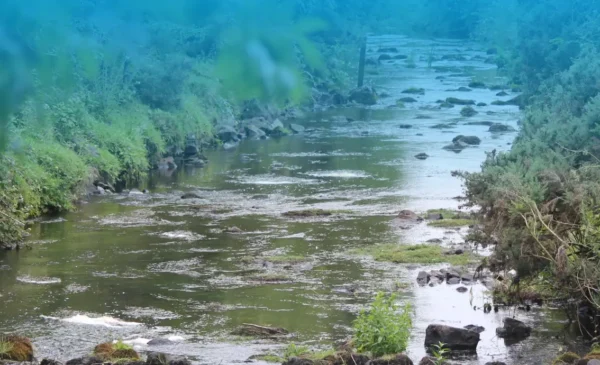The NVZ Regulations specify that you must “clearly show on your Risk Assessment Map any area of land with a slope of 12 degrees or more” and provide a ruling that “Nitrogen fertiliser must not be applied to any land if there is a significant risk of nitrogen entering surface water, taking into account – the slope of the land, particularly if greater than 12 degrees”.
A 12 degree slope can also be expressed as 1 in 5 or 20%, you should use the scale that you are most familiar with.
From the diagram above you can see that a 12-degree slope provides a 1-metre rise for every 5 metres travelled on the horizontal plain.
It may be clear from a visual assessment that a slope is either above or below 12 degrees. In a case where you cannot determine the inclination of a slope or believe it to be a borderline case, you can easily determine the slope incline using the following method.
Method of assessment
You will need 2 straight poles approx 1.3 metres in length, clearly marked at the point where they are exactly 1 metre long (the remaining length is to allow you to place the pole securely in the ground), and a measuring tape.
At the slope you wish to measure select a safe site that is representative of the overall aspect of the slope, be sure that you have sufficient space available around you that you are able to step back to safely assess the inclination.
Drive the poles into the ground 5 metres apart so that only 1 metre is showing above ground. Step back to a distance where you can assess the poles in relation to each other. If the top of the lower slope pole is above the bottom of the higher slope pole then the slope is less than 12 degrees, consequently if the top of the lower slope pole is below the bottom of the higher slope pole then the slope is greater than 12 degrees.
Taken from the NVZ Action Programme guidelines, Booklet 4 at www.gov.scot/publications/nitrate-vulnerable-zones-guidance-for-farmers/
This information is updated and abridged from The 4 Point Plan (2003)
Related resources

Better Nutrient use: Working it Out
After completing this section, you will know the amount of slurry and manure1 generated by your…

Managing Water Margins
How we manage land can have a big impact on surrounding water quality. Spreading operations…

